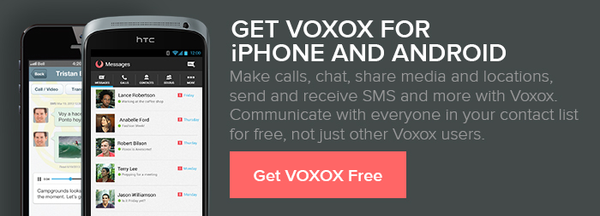My stepfather, Bob, is 89 years old. To get your brain around what it means to be 89, consider this: As a young adult, he was one of the brave soldiers who landed in the D-Day invasion at Normandy.
He is literally a part of history. He’s also an “early adopter.” Which is why he was the first person — way back in the 1990s — from whom I’d ever heard the term “VoIP.”

What was Bob talking about?
I had no idea what Bob was referring to and I wasn’t at all interested. He was an old guy probably talking about his HAM radio. I thought it couldn’t possibly be something cool that you could do over the Internet. Little did I know he was talking about a new technology that was about to change the way the entire world communicated.
VoIP (Voice over Internet Protocol) is what we use when we make a free call over the Internet. This sounds a lot more difficult than it actually is. In non-business communications, it simply involves downloading an app (often at no cost) and signing on to a free service. Calls within that service’s network are typically free, with add-on services available as in-app purchases. Voxox even goes so far as to let you call virtually any phone in the world, including landlines!
Calling virtually any phone in the world for free is pretty amazing. So how did all this happen?
The Protocol
The first thing any new communications technology needs is a protocol — the digital rules, or grammar, for data exchange. Back in 1973, a team of industry pioneers, led by USC engineer Danny Cohen, developed Network Voice Protocol (NVP), allowing live voice data packets to be carried over ARPAnet (an Internet predecessor). The following year, NVP was first successfully tested on ARPAnet. It was the first time ever that voice was carried over non-telephone lines.
The Application
Having a protocol in place was a tremendous achievement, but it took 18 years for the development of the first application to use it.
In 1991, John Walker (of AutoDesk fame) developed Speak Freely, the first true VoIP application. In 1995, as other VoIP apps emerged, industry giants like Intel, Microsoft and Radvision began to work toward standardization for this new communication method that was allowing people to call for free. The gulf between theoretical University project and commercial venture had been crossed.
The Consumer Push
The first consumer VoIP service of interest was Skype, released in 2003. Here’s where my stepfather Bob comes in. I can recall him telling me he made a call for free to his buddy in Australia using Skype. By January 2013, Skype had over 70 million users concurrently online during peak activity.
I still didn’t capture the significance of this — that is, until I came across Voxox.
The Holy Grail
In 2006, Telcentris developed a desktop software application called Voxox. Using VoIP technology, Voxox allows users to call for free, in-network, across many communication networks and devices. Out-of-network and international calls are made possible at incredibly low costs, making phone bills significantly lower than ever before.
Voxox for iPhone and Android followed, giving users more functionality, mobility and flexibility that ever imagined. Now voice and video, call routing and screening, texting, faxing and even more options are available literally at your fingertips. Proprietary text message translation between 60 different languages transforms your smartphone into a universal translator.
Now it’s up to you
Now we’re here. However you use it, VoIP continues to change the communication landscape. My 89-year-old stepfather saw it nearly 20 years ago. I didn’t recognize the significance then, but I certainly do now.







